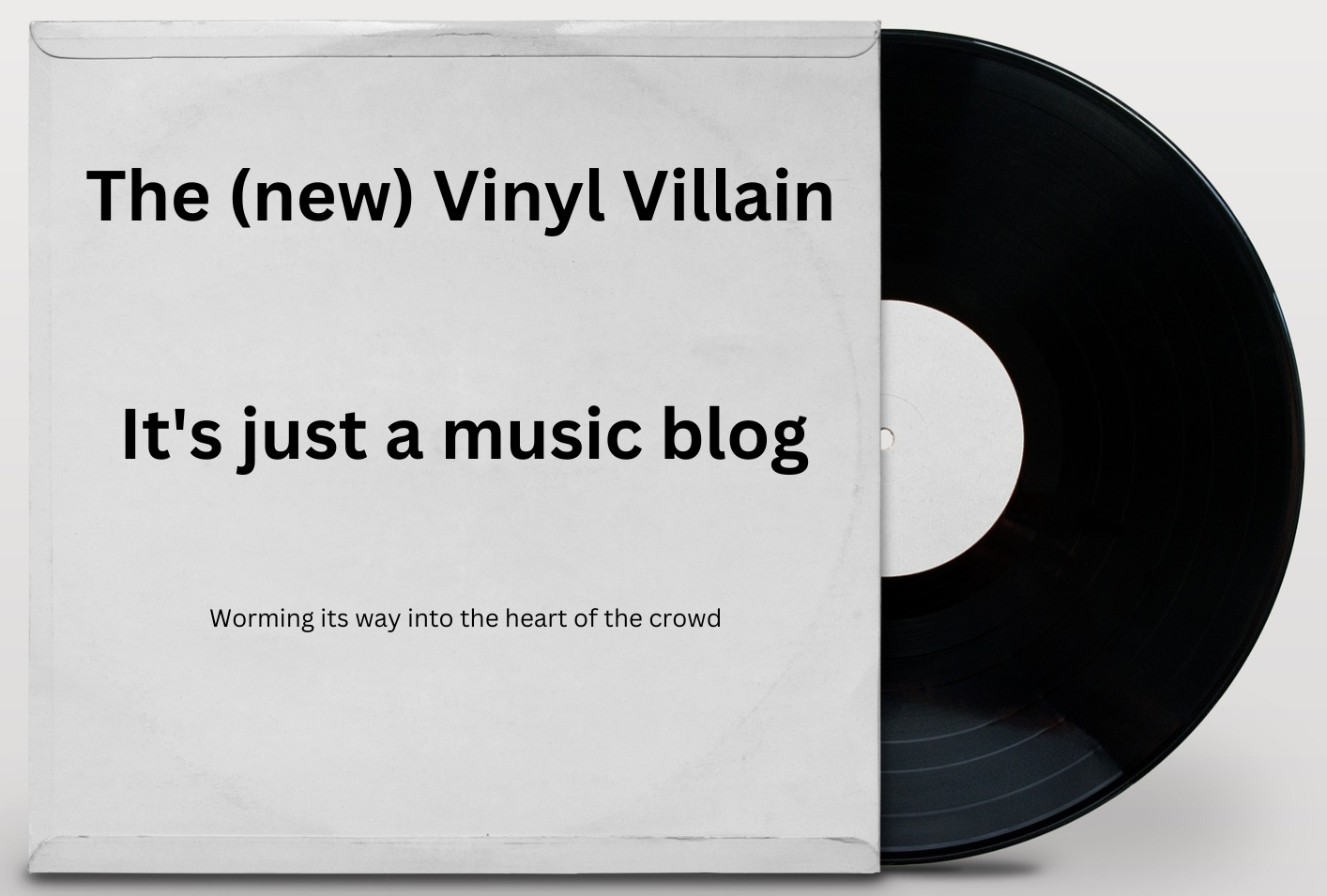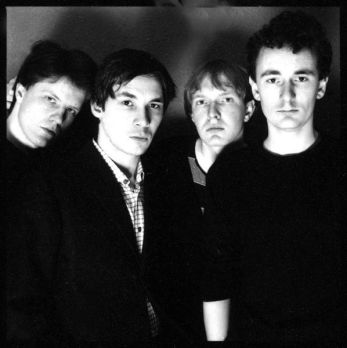A GUEST POSTING by MIKE (Manic Pop Thrills)

JC had once challenged me to try an ICA on the Comsats and I’d had this piece 80% complete on my hard drive for several years when Echorich popped up with his own Comsats ICA a few weeks ago.
Fortunately, there wasn’t much of an overlap between our respective choices of songs (although inevitably their finest moment ‘Independence Day’ has had to be ditched) so I’ve been motivated to finally finish this piece.
Briefly, the Comsats are one of a number of bands I discovered from what I’d consider as a golden year – 1980. As a result, they’ve never been far from my heart. With the benefit of hindsight their career was a fascinating struggle between their own creative impulses and record companies demands for hits.
So, here’s a brief time jumping alternate history of the Comsat Angels which hopefully demonstrates some of those creative tensions whilst still highlighting the quality of the material.
1. Driving (from ‘My Mind’s Eye’, 1992)
After a hiatus of several years the band reconvened to make the seventh Comsat Angels album ‘My Mind’s Eye’ released on Crisis Records.
‘Driving’ was the lead single from what it is without doubt their most accessible album as, left to their own devices, the band pulled together all their experiences into a coherent statement.
Some might even argue that MME is the band’s finest record. I don’t think they’re right, I’d probably lean towards ‘Waiting For A Miracle’ if pushed, but they’re not as wrong as you might think if you’ve only heard the first four or five albums.
Of course, accessible or not, hardly anyone bought it.
2. Will You Stay Tonight? (from ‘Land’, 1983)
Dropped by Polydor after 3 critically acclaimed albums, somewhat inexplicably, Jive saw some form of hit potential in the band and fourth LP ‘Land’ was a not entirely successful attempt to mould their sound into something commercial.
The lead single from ‘Land’ is probably as far as the Comsats sound could have been taken into commercial territory whilst remaining recognisably them. And for me it works.
What didn’t work was the single’s distribution – I had to trail all over Glasgow on day of release to get it and the single only reached 81 in the charts. I can only assume that if the company had got their act together then the band might have had their first Top 40 hit. (Apparently, it’s also the only Comsats record in JC’s collection)*.
3. Do The Empty House (single, 1981)
After the strong critical showings of ‘WFAM’ and second LP ‘Sleep No More’, Polydor still seemed committed to the band and a new 45 ‘Do The Empty House’ was released just 3 months after ‘Sleep No More’. Initially issued as a double single with a re-recording of the band’s debut single on the second disk, ‘DTEH’ was undoubtedly a more radio friendly take on the band’s sound. Yet despite the extra push, it predictably failed to chart, as did the melancholic follow-up ‘It’s History’.
It’s perhaps not that surprising, given their status as failed singles, that neither single made it onto the band’s third LP ‘Fiction’, but that makes it all the more curious that their respective B-sides did!
4. The Cutting Edge (from ‘Chasing Shadows’, 1987)
Despite the way the Jive era ended the Comsats landed on their feet in securing a deal at Island Records due to the patronage of Robert Palmer. To be fair around the same time Island were also signing the likes of Julian Cope and the Triffids.
Their only Island LP ‘Chasing Shadows’ delivered a late night, organic take on their sound, but whilst it was great to hear the band making the sort of record that they wanted to make, ‘Chasing Shadows’ suffered from a not terribly strong set of songs of which single ‘The Cutting Edge’ was the best.
Yet, despite the lack of success, they were given the go ahead to make another album. Sadly, their next album ‘Fire On The Moon’ (released under the name of the Dream Command) found the band creatively adrift straining for a commercial sound again. FOTM isn’t the complete turkey it’s often portrayed as but it’s far from an 80s classic. However, it does make a lot of sense as a stepping stone between ‘Chasing Shadows’ and what was to come in the 1990s.
5. Close Your Eyes (from ‘7 Day Weekend’), 1986
The follow-up to ‘Land’, ‘7 Day Weekend’ largely saw the band ditch their trademark sound in search of an elusive hit. The Human League are an obvious influence on singles ‘You Move Me’ and ‘Forever Young’ but the band also tried to incorporate some Frankie into ‘Day One’. It also contains the career low point of ‘I’m Falling’ which sounds nothing like the Comsats so much so that singer Steve Fellows reportedly smashed a test pressing and mailed it through the Jive letterbox!
7DW doesn’t seem to have been recorded as an album, Steve has described it as a collection of failed singles, and it’s true that only a handful of the songs weren’t available on the singles. Yet, those other songs, including ‘Close Your Eyes’ are amongst the best on the albums, easily on a par with the (good) singles.
Despite this tortured history on balance I’d argue that 7DW contains a stronger set of songs than ‘Land’ – with one obvious exception.
6. Eye Dance (from ‘Sleep No More’, 1981)
As hinted above, ‘Sleep No More’ was received with rave reviews but, perhaps not surprisingly given its dense recording, it didn’t contain any single potential. (Which probably explains the quick release of ‘Do The Empty House’.)
Lead track ‘Eye Dance’ might have been considered for a 45 but it trod similar ground to the standalone single ‘Eye of the Lens’, which had failed to chart.
7. The Glamour (from ‘The Glamour’, 1995)
‘The Glamour’ is a harder edged, denser record than ‘My Mind’s Eye’. It’s an extension of the band’s approach on ‘SNM’ but shares with that record a lack of obvious singles. Nevertheless, the original 13 track record works as a satisfying whole, despite Fellows having subsequently expressed reservations about the album’s direction. The double disk Renascent reissue from 2007 added a further 7 songs to represent the wider range of songs that could have been included but for me it stretches things a little too thinly.
8. Red Planet (single, 1979)
The debut single was released on the band’s own Junta label shortly after they morphed into the Comsats from an earlier incarnation as Radio Earth.
Something of a new wave oddity (which they would subsequently revisit on the ‘Do The Empty House’ double single) what’s surprising is that the single gives little clues as the direction that they’d take on ‘Waiting for a Miracle’.
A couple of years after release I unexpectedly and luckily came across a copy in a singles box on the first floor of the old Virgin Megastore on Union Street in Glasgow.
The three tracks from the EP were absent from the various reissues over the years until they were included amongst the bonus tracks on the 2015 reissue of WFM.
9. Real Story (from ‘Waiting For A Miracle’, 1980)
Honestly, IMHO, ‘Waiting for a Miracle’ is one of the post-punk classics that is every bit the equal of feted albums by the likes of Joy Division and the Bunnymen. The Comsats carved out their own particular territory with a largely sparse sound driven by treated guitars and spartan keys. Yet the songs still contain a power that belies their sparseness.
Echorich featured WFAM heavily in his ICA so some of the obvious choices are gone but, hell, you could pick almost anything without diminishing the quality and ‘Real Story’ manages that with ease.
10. What Else?! (from ‘Fiction’, 1982)
‘Fiction’ saw the band opening up their sound from the claustrophobia of ‘SNM’, presumably in search of wider acceptance. Certainly, the single ‘After The Rain’ (perhaps aiming for a similar atmosphere to Japan) was their most attractive single to date but ultimately the band’s melancholic melodies were a barrier to wider acceptance.
Closing track ‘What Else!?’ is a fabulous song, but it’s difficult to hear it as being in any way commercial in amongst the new pop of 1982.
Postcript
It was only getting on to the internet in the latter years of the 20th century looking for news of a follow-up to the ‘The Glamour’ that I discovered that the band had split shortly after the record’s release.
There was a brief reunion for a handful of live dates in 2009/10, including a Glasgow show (for which I had a ticket but was unable to attend) then nothing. Until the tail end of 2014 when, to coincide with the re-release of the Polydor and Island albums on vinyl and double CD on Edsel, Comsats fan Mark Kermode revealed that the band were in the studio working on new material although Fellows subsequently downplayed this news in an interview with Penny Black. http://www.pennyblackmusic.co.uk/MagSitePages/Article/8168/Comsat-Angels
Releases of ‘Land’ and ‘7 Day Weekend’ were also planned but, for whatever reason, didn’t see the light of day. Which is both a shame as I don’t have ‘Land’ on CD and somewhat surprising given the exorbitant prices that the Comsat reissues now command – best illustrated by the mere £1,407.14 that someone wants for a used copy of ‘Land’!
Since the band’s demise Fellows has put out two solo records– the all instrumental ‘Mood X’ came out as far back as 1997 but he didn’t re-emerge until earlier this year with the excellent, song based ‘Slow Glass’ which is sure to appeal to all Comsats’ fans. https://stephenfellows.bandcamp.com/
MIKE
*JC adds…..Mike is correct in that the 12″ of Will You Stay Tonight is the only piece of vinyl I have by Comsat Angels, picked up for 25p in a bargain bin. I do have digital copies of some of their albums, acquired (ahem!) in one way or another.

